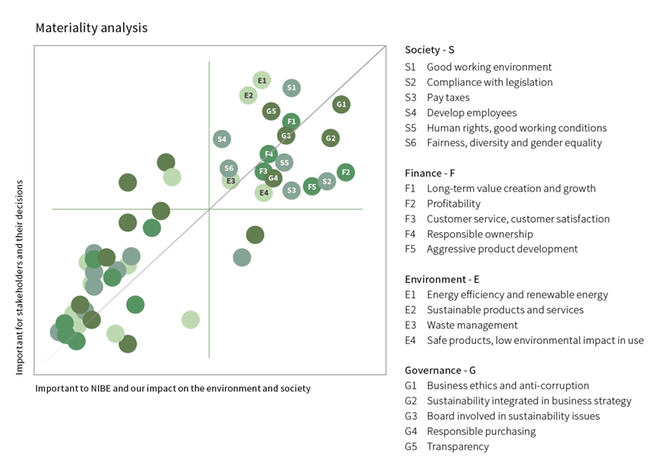GRI-Appendix
Stakeholder Engagement
102-40 - List of stakeholder groups
NIBE has included the following in the stakeholder groups whose opinions are of greatest importance to the Company and/or are affected most by the Company’s profit: shareholders, B2B customers in various sectors, end customers and installers, employees, suppliers, analysis institutes and other representatives of the financial sector and public authorities (supervisory and local).
102-41 - Collective bargaining agreements
Collective bargaining agreements cover 55 (49) percent of the employees.
102-42 - Identifying and selecting stakeholders
NIBE used an assessment method where we viewed each stakeholder group according to their power, legitimacy and urgency (Mitchel et al 1997). From the assessment, we could identify our key stakeholders, their presumed interests in the company, and a channel to engage with them.
102-43 - Approach to stakeholder engagement
Primarily the stakeholder's dialogue is the natural contacts with customers, employees and representatives for other groups.
Analysts, banks, funds, research institutes and universities often approach the company via interviews and questionnaires. NIBE has studied the subjects that are included in the questions they ask us, and included those in the list of material topics.
During 2016, NIBE carried out a structured dialogue with a selection from most stakeholder groups. Besides sending out a questionnaire to approximately 300 selected responders, we also made interviews and gathered data from written sources like analysts’ reports.
During 2017, NIBE collected and documented additional information in connection with naturally occurring contacts with different stakeholders. There are no visible changes regarding stakeholder views on the company.
102-44 - Key topics and concerns raised
The top most important topics raised through our stakeholder engagement are:

